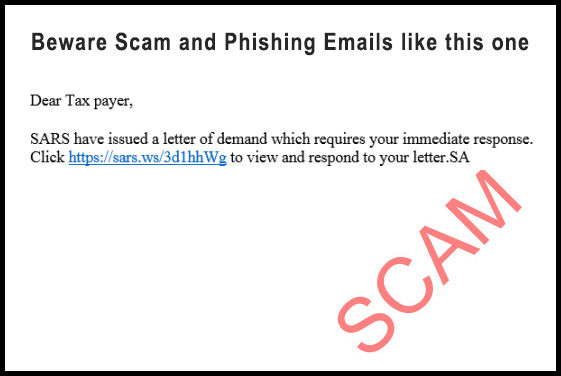What Auto-Assessed Taxpayers Must Know as the November Deadline Looms

“The hardest thing in the world to understand is the income tax” (Albert Einstein)
A year after the first mass auto-assessments were issued by SARS in 2020, many more taxpayers are facing the 2021 tax season deadline of 23 November – just days away!
Read on to find out what has changed since last year, what is still the same and important to know, and why you need to contact your accountant before accepting or editing a return/auto-assessment result.
What’s changed since auto assessments were introduced last year?
- SARS expanded its auto assessment features to more than three million taxpayers, after auto assessing more than 83% of taxpayers last year.
- Engagements with taxpayers this year will be through SARS’s various digital platforms:
- The SMS channel (47277) is a new free self-help SMS service for taxpayers to, for example, request tax numbers or check if they need to submit a tax return.
- SARS online self-help system at sars.gov.za (click on the “Online Services” icon) for various functions such as requesting Tax Reference Numbers or uploading supporting documents.
- Chatbot “Lwazi” on eFiling and MobiApp, for answers to tax-related questions and requesting information such as a Statement of Account, or an Audit or Refund Status.
- Video or telephonic appointment with a SARS official – eBookings can be made via the SMS channel; the “Book an appointment” icon on www.sars.gov.za (halfway down the Home Page on the left); or via the toll-free number 0800 00 7277 (select “0” to make an eBooking).
- In September, SARS confirmed that a once-off penalty will be imposed for late submission of Personal Income Tax returns for taxpayers who respond to the auto assessment after SARS has issued an “estimated assessment”.
What is still important to know?
- If you have been auto-assessed, you will receive an SMS from SARS. If you have not received an auto-assessment SMS, it does not mean you don’t have to file a tax return. Non-provisional taxpayers who were not auto-assessed must still file their returns by 23 November, either digitally using eFiling or the SARS MobiApp or by making a booking at a branch.
- The auto assessment is not an assessment for the purposes of the Tax Administration Act, but a notice for individual taxpayers to access their eFiling profile to review the ‘proposed tax return’ that has been pre-populated or partially completed by SARS.
- Accepting SARS’ ‘proposal’ will result in this return prepared by SARS being submitted on behalf of taxpayer and an ITA34 assessment being issued.
- Choosing the ‘Edit’ option will populate a detailed tax return that can be edited and filed as normal. An ITA34 assessment will be issued based on this return.
- Failing to either accept or edit an auto-assessment result by 23 November 2021 will result in SARS raising an ‘estimated assessment’. This is a final assessment of the information about a taxpayer available to SARS and cannot be changed – if the information is incorrect, the dispute process will have to be followed.
- SARS says at least 70% of taxpayers will receive refunds due within 72 hours if nothing else is required. SARS also says taxpayers can expect very specific requests where outstanding information is holding up an assessment.
- Whether you have received an auto assessment or not, and whether you have accepted it or not, it is best to contact your accountant – to ensure you cover yourself against any possible mistakes.
7 reasons to contact your accountant before you do anything!
- SARS will never request banking details via email, post or SMS. If you have received an auto assessment SMS, check with your accountant that the communication you received is legitimate.
- Don’t assume that the partially completed auto assessment return must be correct because it was pre-populated by SARS. The third-party data from employers, financial institutions, medical aids and others may be incorrect or outdated, and some information may be missing. Your accountant will help you fulfil your responsibility to check for omissions and mistakes before accepting.
- Professional advice will protect you against non-disclosure, which can result in penalties and interest and even criminal prosecution. Omissions could include, for example, income from sources other than reporting third parties like a capital gain, rental income, cryptocurrency, or offshore investments. SARS’ significantly improved abilities to draw taxpayer information from local and international third parties make it easier than ever before for SARS to detect incorrect or undisclosed information.
- The auto assessments will not in all cases include all the allowable deductions, such as wear and tear, home office expenses, donations to charities and travel expenses. Your accountant can help ensure that all allowable deductions are included to prevent a larger tax liability than necessary.
- Accepting an incorrect or incomplete return, whether by accident, negligence or through ignorance, can even lead to criminal prosecution. Accepting the auto-assessment result will also eliminate your ability to dispute the assessment later. Even if the auto assessment seems right, first check with your accountant.
- Failing to accept or edit an auto assessment result by 23 November will result in penalties – or worse. Taxpayers can be convicted of an imprisonable criminal offence for, among others, failing to submit a return when required to do so; retaining all relevant substantiating records; providing any information requested by SARS; or not disclosing any material information to SARS; even if this is due to negligence or ignorance.
- An average of 12% of returns submitted last year were selected for audit and verification. Both these processes are time-consuming and expensive – your accountant can help ensure you are ready for either audit or verification.










